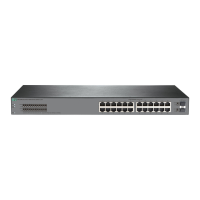276
lldp admin-status
Use lldp admin-status to set the LLDP operating mode.
Use
undo lldp admin-status to restore the default.
Syntax
In Layer 2 Ethernet interface view:
lldp [ agent { nearest-customer | nearest-nontpmr } ] admin-status
{ disable | rx | tx | txrx }
undo lldp [ agent { nearest-customer | nearest-nontpmr } ] admin-status
In Layer 2 aggregate interface view:
lldp agent { nearest-customer | nearest-nontpmr } admin-status { disable
| rx | tx | txrx }
undo lldp agent { nearest-customer | nearest-nontpmr } admin-status
In IRF physical interface view:
lldp admin-status { disable | rx | tx | txrx }
undo lldp admin-status
Default
The nearest bridge agent operates in TxRx mode, and the nearest customer bridge agent and
nearest non-TPMR bridge agent operate in Disable mode.
Views
Layer 2 Ethernet interface view
Layer 2 aggregate interface view
IRF physical interface view
Predefined user roles
network-admin
Parameters
agent: Specifies an LLDP agent type. If you do not specify an agent type in Ethernet interface view,
the command sets the operating mode for nearest bridge agents.
nearest-customer: Specifies nearest customer bridge agents.
nearest-nontpmr: Specifies nearest non-TPMR bridge agents.
disable
: Specifies the Disable mode. A port in this mode cannot send or receive LLDP frames.
rx
: Specifies the Rx mode. A port in this mode can only receive LLDP frames.
tx: Specifies the Tx mode. A port in this mode can only send LLDP frames.
txrx
: Specifies the TxRx mode. A port in this mode can send and receive LLDP frames.
Usage guidelines
In IRF physical interface view, only nearest bridge agents are supported.
Examples
# Set the LLDP operating mode to Rx for the nearest customer bridge agents on GigabitEthernet
1/0/1.
<Sysname> system-view

